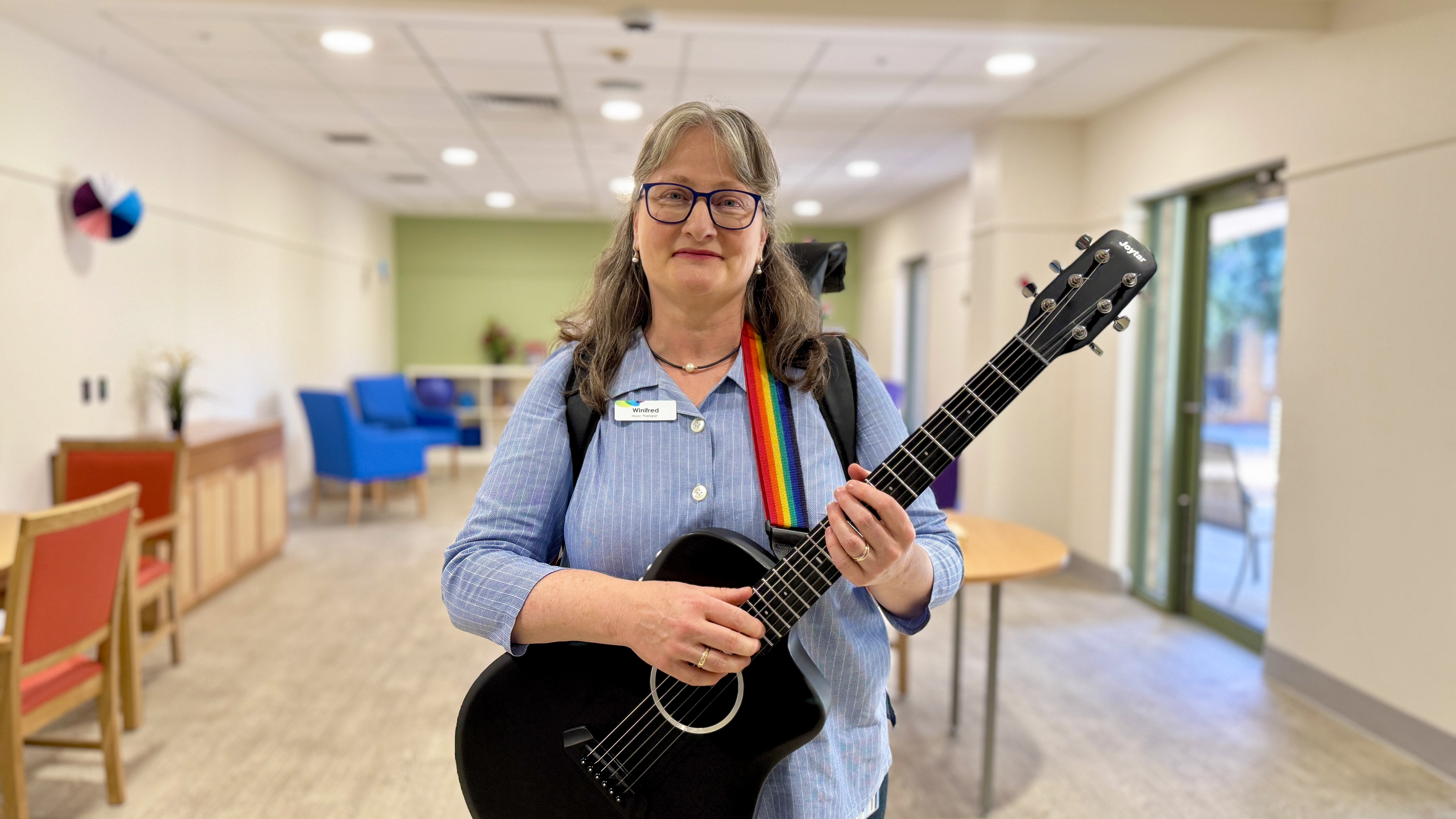Ever wondered how music therapy can make a difference, especially for those with dementia? Passionate registered music therapist Winifred Beevers provides insight into her role at Sunshine Hospital’s Dementia Management Unit (DMU), part of the Aged General Medicine and Subacute Services (AGMS) and Occupational Therapy’s 12-month music therapy trial.
From a young age, music was a central part of Winifred’s family life. She has a deep passion for music that extends beyond her profession.
Growing up surrounded by melodies, she started with the piano and went on to learn several instruments.
Despite her father's hopes for her to master the violin, an instrument she wasn't fond of, Winifred pursued the flute, which quickly became a favourite.
‘The flute allowed me to perform in school concert bands, and it fueled my love for making music,’ she said.
As her skills evolved, she also learned the piano accordion, guitar, and ukulele, using them in her therapy sessions. 
‘Music therapy felt like the perfect balance between working with people and doing something I deeply love,’ she explains.
Winifred loves exploring new instruments and is currently experimenting with a chanter, the precursor to the bagpipes, though her primary instrument remains the piano.
‘The piano will always have the largest part of my musical heart.’
Her rich musical background has led her to work with older patients, especially those grappling with dementia.
‘I can’t properly articulate why, but I just feel right when working with older people,’ she says.
‘I enjoy solving the puzzle of who this person was, what they were like, what music will work with them; before their dementia made communication difficult.’
Through music, she uncovers pathways to memories, breaking down barriers to communication.
The instruments she selects vary by patient and session goals.
‘Music connects with people in a way that is both stimulating and reassuring. People don’t have to think to respond, they just do. Music cues long-term memories and the feelings associated with them.’
It’s common for patients to hum melodies or sing lyrics from songs they first heard decades ago.
Music can stimulate movement and affect heart rates and breathing. Winifred plans the music to maximize outcomes and achieve therapy goals, often creating heartwarming moments as patients light up, sing, or share laughter.
‘Observing the effect can be easy; you see the person with dementia smiling, supported to engage with others.’
To measure effectiveness, she uses the Music Therapy Engagement Scale for Dementia (MTED), assessing musical engagement, response, verbal communication, emotional response, and overall engagement.
Additionally, she tracks mood changes using a Patient Reported Experience Measure (PREM).
One of the challenges she faces is selecting the right repertoire that resonates with her patients.
‘Simply finding the right music can be difficult. I love learning new repertoire and getting it right for a patient is a fabulous feeling.’
A particularly touching moment occurred when a patient who was once withdrawn began responding to music with smiles and humming, showcasing the power of musical engagement.
